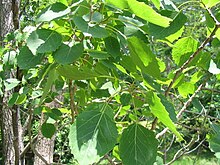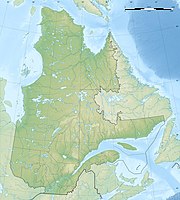Réserve écologique du Père-Louis-Marie
|
Réserve écologique du Père-Louis-Marie
|
||
| location | La Vallee-de-la-Gatineau , Quebec, Canada | |
| surface | 3.15 km² | |
| WDPA ID | 23120 | |
| Geographical location | 46 ° 13 ' N , 75 ° 50' W | |
|
|
||
| Setup date | 1993 | |
| administration | MDDEP | |


The Réserve écologique du Père-Louis-Marie is a protected area established in 1993 on an area of 315 hectares in the southwest of the Canadian province of Québec in the regional county municipality of La Vallée-de-la-Gatineau .
It is located 25 km southeast of the municipality of Maniwaki on Lac des Trente et Un Milles , between the bays Baie des Sables and Baie Desjardins and part of the Baie de Mackenzie . It represents and protects the forests typical of the central Gatineau area, where the yellow birch predominates. In addition to the sugar maple, one of the northernmost locations of the black sugar maple can be found here .
The reserve is typical of the Upper Laurentides , or this part of the Canadian Shield . The area is between 250 and 500 m above sea level, with some depressions dropping to 150 m. The subsoil consists mostly of limestone and marble on which Tillit was deposited during and after the last Ice Age , but which is often broken through by rock. Brown earth and podsol, interspersed with rock and stone, describe the soils of the region, with considerably thicker layers of organic material in the lower layers.
In addition to the yellow birch, there is the Weymouth pine ( French pinède blanche ), often associated with Corylus cornuta from the genus of the hazel , or, depending on the depth of the soil, also with yellow birch. But also Populus grandidentata , a species of poplar that is only found in the northeastern United States and southeastern Canada, as well as firs and balsam poplar .
The tree species in the reserve offer the white-tailed deer abundant food, even in winter.
The name of the area goes back to Père Louis-Marie Lalonde (1896–1978), who bequeathed a herbarium with more than 100,000 copies to the Université Laval in 1962 .
Web links
- Réserve écologique du Père-Louis-Marie , government website
- Commission de toponymie du Québec: Réserve écologique du Père-Louis-Marie
Remarks
- ↑ Distribution map (PDF, 704 kB).
